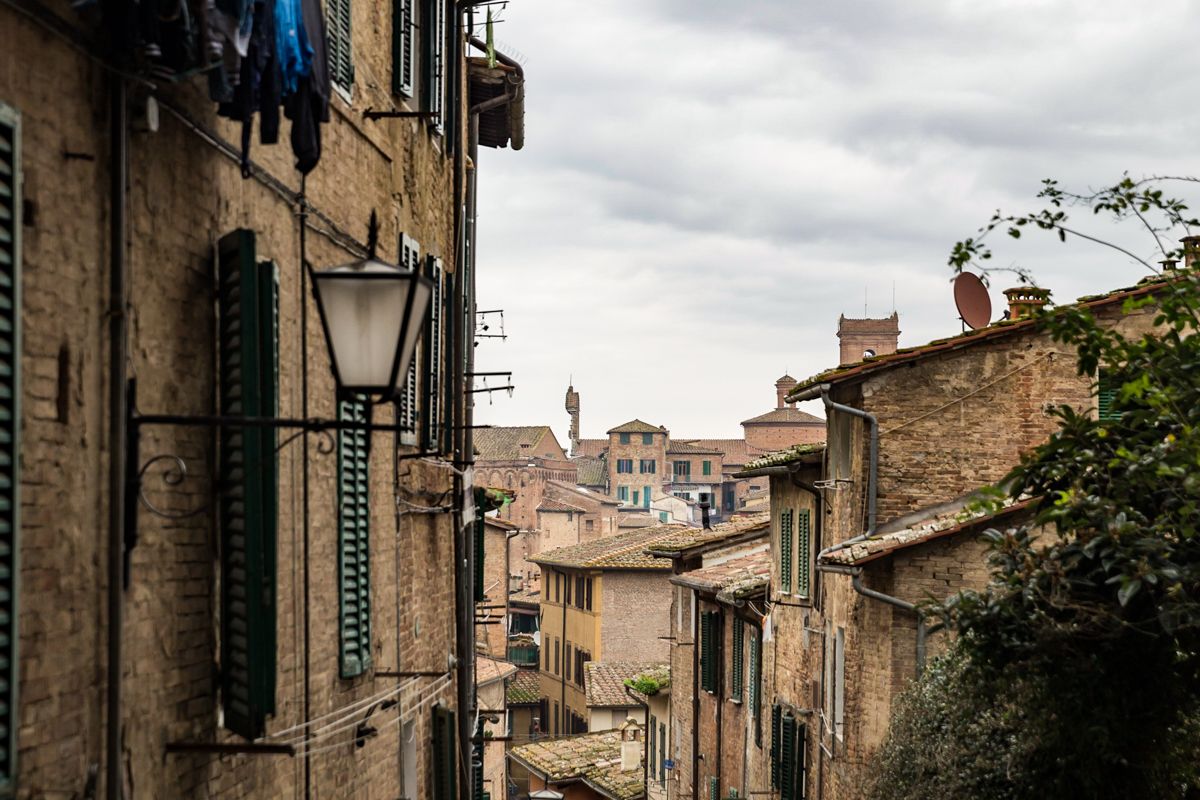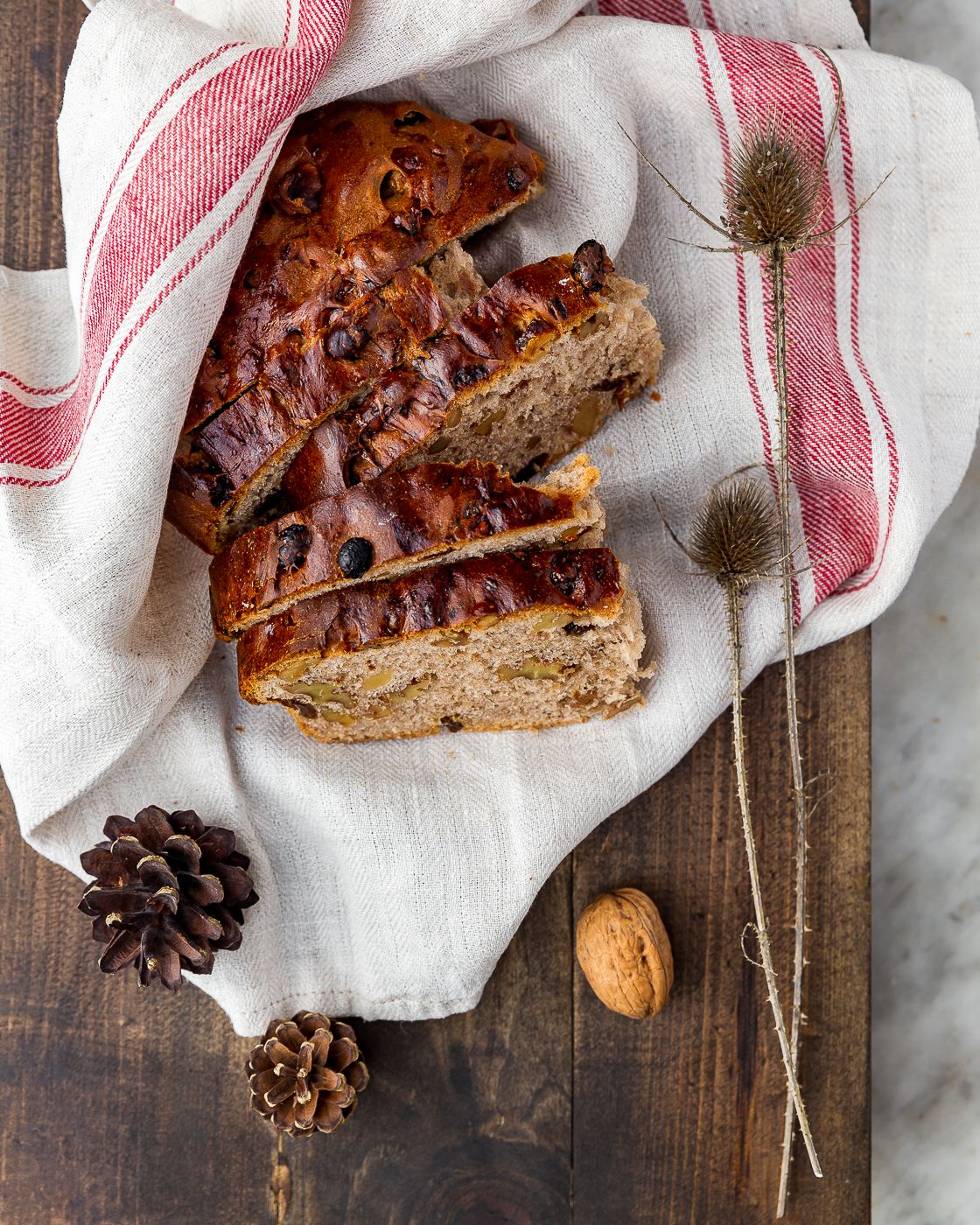In September, a few spoonfuls of sugar and wine grapes are added to plain bread dough to make schiacciata con l’uva. It is sticky, jammy, slightly crunchy from the grape seeds. It stains your lips and hands, but it is the best seasonal treat and traditionally associated with vendemmia, the grape harvest.
Late October to mid-November, on the other hand, signals the arrival of pan co’ santi, another traditional Tuscan bread enriched for a holiday or season. In this case, sugar, olive oil, and red wine are added to bread dough which is then studded with raisins and walnuts and shaped into a round loaf. Its name derives from an association with All Saints’ Day, which falls on November the 1st.
Pan co’ santi is followed by Christmastime treats, the highlight of confectionery production in Siena. This is when the aroma of spices–cinnamon, mace, nutmeg, pepper–permeates the town and seasonal sweet treats wrapped in traditional paper crowd the windows of every bakery and pastry shop.
Christmas season sees the arrival of cavallucci–sturdy, spiced Christmas biscuits with candied citrus peels and walnuts, dusted in flour–and copate, a brittle-like crunchy dessert of caramel and almonds wedged between wafers.

Pan Co'Santi
This is also the time of panforte, the world-famous and most-renowned Sienese Christmas sweet: a dense, spiced, nut-filled specialty bread that has become the symbol of Siena. Every Sienese family has its favourite bakery shop, and come the start of the season, a sort of secular pilgrimage begins as locals seek out the flavours and aromas of the winter holidays.
Next to panforte, Christmas in Siena means ricciarelli. A cross between a small pastry and an almond cookie, ricciarelli feature a dusting of powdered sugar with a soft inside that melts in your mouth and a striking aroma of bitter almonds (and they are naturally gluten free!).
As soon as the Christmas season comes to an end, carnival time sprinkles confetti in Piazza del Campo and brings the frittelle di riso hut back to the square. For a few weeks, this is where you can buy frittelle, fried right on the spot, wrapped in white paper, and generously dusted with sugar. These fritters are made with rice that has been cooked and left to soften and almost melt, resulting in hollow, super-fluffy fritters.
As the temperatures warm up for the spring, bakeries begin to sell schiacciata di Pasqua: a leavened bread flavored with rose petal syrup and anise that takes its name not from the shape (schiacciata is a flatbread whose name means “squashed/smashed”), but rather from the large amount of eggs “smashed” in its preparation.
One of the best spots to buy pan co’ santi, panforte, and schiacciata di Pasqua in Siena is the historic bakery Forno il Magnifico. You’ll know when schiacciata season has arrived by the long line of locals outside.
Luckily, all of these baked goods are just as delicious when made at home. Try our recipe for Pan co’ Santi here!

